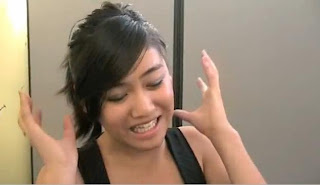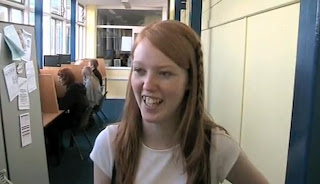21 is a 2008 drama film from Columbia Pictures. It is directed by Robert Luketic. The film is inspired by the true story of the MIT Blackjack Team as told in Bringing Down the House, the best-selling book by Ben Mezrich.
Though not recieving too well by the box office, the stylised shooting and extreme close ups of poker chips, playing cards, and the character's eye movements and expressions could be incorporated into our film opening.
Note; 21 features BlackJack whereas we intend to use Texas Hold'em.
Textual Analysis of first 3 minutes
Camera angles/shots and editing
Production Company logo fades in and out through black
(Digitalised/CGI) Camera travels up coloured lines, zooms out in spiralling motion to CU to reveal King of Spades.
MC Ace of Spades.
Zoom in quickly.
Poker chips LS, zoomed to ECU.
Tilt up Poker chips.
High angle quick pan over table.
Frame moves upwards from left corner
CU on cards
Zooms out slowly on playing cards
CU of eyes – card reflected on glasses lens
Ace of Spade – low angle pan over surface of card
Quick circular pan of table from outside – backs of players and hints of poker table visible.
CU poker chips.
High angle, zoom out spiralling.
CU of protagonist combing hair, putting on costume.
Frame is blurred, and then concentrates on character.
CU of cards changing, (digitalised) suit and number lighting up.
(Digitalised) Low angle camera spiralling poker chips.
CU protagonist.
Free hand, tilt down to folded arms.
CU touch to the eye.
Low angle CU feet, slow motion.
Quick paced, little transitions, lots of digital effects on cards and chips, snappy editing.
(Titles)
Production Company (Columbia) name fades in from black
Slow tilts of the cityscape.
Credits fade in – white Times New Roman text, capitals. Matched relaxed scenery.
Actor’s credits on right side – framing.
Slow pace.
Sound
Beginning – varying buzzing tone of trumpet – long note
Impact of card on table – slamming sound effect – similar to sound of air in a tunnel
40 seconds in – voice over of protagonist
Relaxed, cool and jazzy beat begins (low based guitar and drumming) – suits cool nature of game.
Background music – guitar becomes higher pitched.
Diegetic
Sound of card shuffling out card rack.
Sound of cards flicking.
Men’s feet stomping – resounding sound.
Non-diegetic
Voiceover.
Music.
Background sounds – people laughing, moving in chair, chips being moved when it’s not shown on screen.
(Titles)
Right after protagonist is seen with a panicked expression, first line of music is “I’m feeling rough, I’m feeling wrong in the prime of my life.” – Continuity in some sense.
Carefree, young, happy tune to start the movie – matches scene of person riding bike – “We’ve got the vision, now let’s have some fun.”
Lyrics also match the theme of Poker and the game – “We’re fated to pretend”
Mise-en-scene
Props: Playing cards, Poker chips, Poker table, Cards rack, Watch, Drink.
Costume: Fake moustache, Wig, glasses.
Set: Casino!?
Note: (Will take screenshots of more poker films to analyse!)




































